Fathers of the Church: St. Augustine (30 vols.)
Digital Logos Edition
Overview
A major influence over Christianity and Western philosophy, Augustine was a bishop of Hippo Regius in the Roman province of Africa. This collection features many never-before-translated editions of his Latin writings as well as his beloved and most important works—the Confessions, the City of God, and The Trinity. These 30 volumes exhibit the best scholarship and translational work on these classic writings, bringing Augustine into your library like you’ve never seen before. Whether you’re looking to begin studying the Early Church or seeking to expand your library, the Fathers of the Church Series is the most thorough publication available.
In Logos, these works become the backbone of any study on the early church. Links to the patristic writings of the Early Church Fathers will bring you right to the source—to the very quote—allowing you to see instant context. Footnotes appear on mouseover, as well as references to Scripture and extra-biblical material in your library, and you can perform near-instant searches across these volumes, searching for references to keywords or Scripture passages.
About the Series
The rich Christian heritage of East and West comes alive in the volumes of The Fathers of the Church, a series widely praised for its brilliant scholarship and unparalleled historical, literary, and theological significance. The series consists of more than 120 published volumes, with two new volumes published each year.
Interested in more from the early church? Get the entire Fathers of the Church series—127 volumes total—at an enormous discount!

- Hundreds of distinct writings from one of the greatest influences on Western philosophy
- Numerous works translated for the first time in English
- Title: St. Augustine
- Author: St. Augustine of Hippo
- Series: Fathers of the Church
- Publisher: Catholic University of America Press
- Volumes: 30
- Pages: 11,843
- Confessions
- The City of God, Books I–VII
- The City of God, Books VIII–XVI
- The City of God, Books XVII–XXII
- The Trinity
- Letters, Volume 1 (1–82)
- Letters, Volume 2 (83–130)
- Letters, Volume 3 (131–164)
- Letters, Volume 4 (165–203)
- Letters, Volume 5 (204–270)
- Letters, Volume 6 (1*–29*)
- Commentary on the Lord’s Sermon on the Mount with Seventeen Related Sermons
- On Genesis: Two Books on Genesis Against the Manichees; And, On the Literal Interpretation of Genesis, an Unfinished Book
- The Teacher; The Free Choice of the Will; Grace and Free Will
- Four Anti-Pelagian Writings
- Tractates on the Gospel of John, 1–10
- Tractates on the Gospel of John, 11–27
- Tractates on the Gospel of John, 28–54
- Tractates on the Gospel of John, 55–111
- Tractates on the Gospel of John, 112–124; Tractates on the First Epistle of John
- Sermons on the Liturgical Seasons
- Christian Instruction; Admonition and Grace; The Christian Combat; Faith, Hope and Charity
- The Immortality of the Soul; The Magnitude of the Soul; On Music; The Advantage of Believing; On Faith in Things Unseen
- The Happy Life; Answer to Sceptics; Divine Providence and the Problem of Evil, Soliloquies
- Treatises on Various Subjects
- Treatises on Marriage and Other Subjects
- Eighty-Three Different Questions
- Against Julian
- The Catholic and Manichaean Ways of Life
- The Retractations
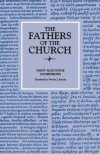
Augustine’s Confessions are his best-known and most influential work, being recognized as the first truly Western autobiographical work. Divided into 13 books, the Confessions are autobiographical admissions of his sinful youth and conversion to Christianity. The translator believes this work was written to address God directly, being both a meditation on the workings of Providence and a hymn of divine praise. Out of all of Augustine’s writings, the Confessions undoubtedly have the broadest appeal and is among his finest literary work.
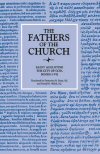
The City of God, Books I–VII
- Author: Augustine of Hippo
- Translators: Demetrius B. Zema and Gerald G. Walsh
- Series: Fathers of the Church
- Publisher: Catholic University of America Press
- Publication Date: 1950
- Pages: 499
Perhaps one of the most profound treatises on Christianity and government, the City of God envisions Christianity as a spiritual force, which should preoccupy itself with the heavenly city, New Jerusalem, rather than the earthly municipal and state affairs. The Fathers of the Church Series has divided this ancient classic into three convenient volumes.
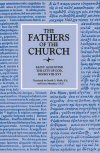
The City of God, Books VIII–XVI
- Author: Augustine of Hippo
- Translators: Gerald G. Walsh and G. Monahan
- Series: Fathers of the Church
- Publisher: Catholic University of America Press
- Publication Date: 1952
- Pages: 567
Perhaps one of the most profound treatises on Christianity and government, the City of God envisions Christianity as a spiritual force, which should preoccupy itself with the heavenly city, New Jerusalem, rather than the earthly municipal and state affairs. The Fathers of the Church Series has divided this ancient classic into three convenient volumes.
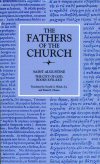
The City of God, Books XVII–XXII
- Author: Augustine of Hippo
- Translator: Gerald G. Walsh
- Series: Fathers of the Church
- Publisher: Catholic University of America Press
- Publication Date: 1954
- Pages: 561
Perhaps one of the most profound treatises on Christianity and government, the City of God envisions Christianity as a spiritual force, which should preoccupy itself with the heavenly city, New Jerusalem, rather than the earthly municipal and state affairs. The Fathers of the Church Series has divided this ancient classic into three convenient volumes.
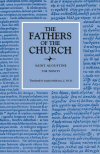
The Trinity
- Author: Augustine of Hippo
- Translator: Stephen McKenna
- Series: Fathers of the Church
- Publisher: Catholic University of America Press
- Publication Date: 1963
- Pages: 556
This is Augustine’s famous treatise discussing the Trinity in the context of logos.
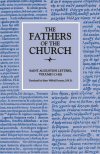
Letters, Volume 1 (1–82)
- Author: Augustine of Hippo
- Translator: Wilfrid Parsons
- Series: Fathers of the Church
- Publisher: Catholic University of America Press
- Publication Date: 1951
- Pages: 442
These letters, taken as a whole, present a vivid and fascinating view of life in North Africa at the beginning of the fifth century. In addition to the comments about ecclesiastical and episcopal affairs, there are also letters on various threats to peace and security common in this period of the late empire, on slavery and the growth of the slave trade, and on Roman involvement in African affairs, both ecclesiastical and civil.
There are letters dealing with moral questions and pastoral problems, in both marriage and the family, as well as in larger areas of doctrine and discipline in the Church. The conflict resulting from the end of the Donatist schism becomes clearer, as does the refrain of desperation stemming from an inadequate supply of clergy for parishes needing to be served. A large number of these letters illustrate the day-to-day worries of a fifth century North African bishop: clerical scandals, Church finances, people seeking sanctuary in a church (and the ensuing problems with the civil authorities), and disputed episcopal succession.
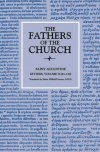
Letters, Volume 2 (83–130)
- Author: Augustine of Hippo
- Translator: Wilfrid Parsons
- Series: Fathers of the Church
- Publisher: Catholic University of America Press
- Publication Date: 1953
- Pages: 415
These letters, taken as a whole, present a vivid and fascinating view of life in North Africa at the beginning of the fifth century. In addition to the comments about ecclesiastical and episcopal affairs, there are also letters on various threats to peace and security common in this period of the late empire, on slavery and the growth of the slave trade, and on Roman involvement in African affairs, both ecclesiastical and civil.
There are letters dealing with moral questions and pastoral problems, in both marriage and the family, as well as in larger areas of doctrine and discipline in the Church. The conflict resulting from the end of the Donatist schism becomes clearer, as does the refrain of desperation stemming from an inadequate supply of clergy for parishes needing to be served. A large number of these letters illustrate the day-to-day worries of a fifth century North African bishop: clerical scandals, Church finances, people seeking sanctuary in a church (and the ensuing problems with the civil authorities), and disputed episcopal succession.
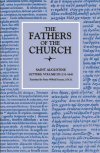
Letters, Volume 3 (131–164)
- Author: Augustine of Hippo
- Translator: Wilfrid Parsons
- Series: Fathers of the Church
- Publisher: Catholic University of America Press
- Publication Date: 1953
- Pages: 412
These letters, taken as a whole, present a vivid and fascinating view of life in North Africa at the beginning of the fifth century. In addition to the comments about ecclesiastical and episcopal affairs, there are also letters on various threats to peace and security common in this period of the late empire, on slavery and the growth of the slave trade, and on Roman involvement in African affairs, both ecclesiastical and civil.
There are letters dealing with moral questions and pastoral problems, in both marriage and the family, as well as in larger areas of doctrine and discipline in the Church. The conflict resulting from the end of the Donatist schism becomes clearer, as does the refrain of desperation stemming from an inadequate supply of clergy for parishes needing to be served. A large number of these letters illustrate the day-to-day worries of a fifth century North African bishop: clerical scandals, Church finances, people seeking sanctuary in a church (and the ensuing problems with the civil authorities), and disputed episcopal succession.
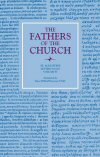
Letters, Volume 4 (165–203)
- Author: Augustine of Hippo
- Translator: Wilfrid Parsons
- Series: Fathers of the Church
- Publisher: Catholic University of America Press
- Publication Date: 1955
- Pages: 434
The Letters appearing here in translation were written approximately between the years 410 and 420. This period in Augustine's life coincides with the ending of the long controversy with the Donatists and the spread of the Pelagian errors concerning nature and grace. When compared with earlier letters there is more emphasis in these letters on intellectual and doctrinal matters.
Perhaps the most important, and certainly the longest in this collection, (pp.141–190) is letter 185 addressed in 417 to the tribune Boniface. It gives a vivid description of the crimes committed by the Donatists against Catholics. Augustine writes: “Some (Catholics) had their eyes put out; one bishop had his hands and tongue cut off; some were massacred. I say nothing of the inhuman beatings, of the looting of homes in nightly raids, of fires set not only to private homes but even to churches; and into these flames some even cast the sacred books” (chapter 30).
The civil authorities eventually intervened in these disturbances and at times with coercive measures. Finally on January 30, 412 the Emperor Honorius made the profession of Donatism a criminal offense and ordered clerics and ministers of such heretics removed from the African soil which they had polluted by sacreligious rites. Though initially opposed to coercion, Augustine changed his view.
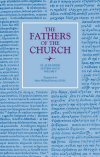
Letters, Volume 5 (204–270)
- Author: Augustine of Hippo
- Translator: Wilfrid Parsons
- Series: Fathers of the Church
- Publisher: Catholic University of America Press
- Publication Date: 1956
- Pages: 333
These letters, taken as a whole, present a vivid and fascinating view of life in North Africa at the beginning of the fifth century. In addition to the comments about ecclesiastical and episcopal affairs, there are also letters on various threats to peace and security common in this period of the late empire, on slavery and the growth of the slave trade, and on Roman involvement in African affairs, both ecclesiastical and civil.
There are letters dealing with moral questions and pastoral problems, in both marriage and the family, as well as in larger areas of doctrine and discipline in the Church. The conflict resulting from the end of the Donatist schism becomes clearer, as does the refrain of desperation stemming from an inadequate supply of clergy for parishes needing to be served. A large number of these letters illustrate the day-to-day worries of a fifth century North African bishop: clerical scandals, Church finances, people seeking sanctuary in a church (and the ensuing problems with the civil authorities), and disputed episcopal succession.
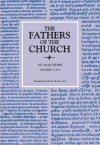
Letters, Volume 6 (1*–29*)
- Author: Augustine of Hippo
- Translator: Robert B. Eno
- Series: Fathers of the Church
- Publisher: Catholic University of America Press
- Publication Date: 1989
- Pages: 220
Most of the works of St. Augustine of Hippo (354–430) have been extant and studied for centuries by Christians throughout the world. Since this Doctor of the Western Church has long been the best known and most widely read of the Latin Fathers, it is so much more unexpected that a previously unknown work should be found. Johannes Divjak found not only a single work but in fact a whole collection of letters, which he published in a critical Latin edition in 1980.
This volume contains the first English translation of these newly discovered letters. The letters range in size from short memoranda to long treatises on various subjects. In addition, there are three other previously unknown letters: two written to Augustine by Consentius, a North African rhetorician, and one written by Saint Jerome to Aurelius of Carthage.
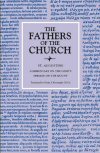
Commentary on the Lord’s Sermon on the Mount with Seventeen Related Sermons
- Author: Augustine of Hippo
- Translator: Denis J. Kavanagh
- Series: Fathers of the Church
- Publisher: Catholic University of America Press
- Publication Date: 1951
- Pages: 382
Originally written between the years 393 and 396, this commentary discusses Matthew 5–7, and is regarded as a product of his early years of his priesthood. His exegesis reveals an unexpected spiritual insight for his limited training at the time of its composition.
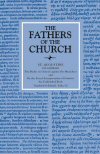
On Genesis: Two Books on Genesis Against the Manichees; And, On the Literal Interpretation of Genesis, an Unfinished Book
- Author: Augustine of Hippo
- Translator: Roland J. Teske
- Series: Fathers of the Church
- Publisher: Catholic University of America Press
- Publication Date: 1990
- Pages: 211
Augustine’s Two Books on Genesis against the Manichees and On the Literal Interpretation of Genesis: An Unfinished Book represent the first two of five explanations of the beginning of the Book of Genesis that he undertook between 388 and 418. In the first, a commentary on Genesis 1–3, Augustine counters the ignorant and impious attacks against Scripture by the Manichees, with whom he was a “hearer” for nine years. The second would have been a hexaemeron, a commentary on the six days of creation, but, as Augustine admits, his inexperience in scriptural exegesis collapsed under the weight of the burden, “and before I finished one book, I gave up the labor that I could not sustain.”
Although Augustine agrees that many things in Scripture may seem absurd to the unlearned, he holds that they can produce great pleasures once they have been explained. It was this tenet, realized in his spiritual rather than corporeal interpretation of Scripture, that led him to counter the impious attacks the Manichees used to attract those who sought a more intellectual understanding of God over and against an anthropomorphic view. Augustine’s brilliant assimilation of Christian revelation and the intellectual faith of the Neoplatonic circle around Ambrose in Milan gave rise to his “spiritual” interpretation of Genesis 1–3 in the Two Books on Genesis against the Manichees.
In On the Literal Interpretation of Genesis: An Unfinished Book, Augustine succeeds in presenting an ad litteram interpretation for 25 verses before arriving at the difficult verse on man’s having been made to God’s image and likeness. At this point he breaks off because, in the words of John O’Meara, “it either tended to blasphemy or could not be reconciled with the Catholic faith.” Perhaps because he later writes that he considers his literal attempt to interpret Genesis a failure, the texts herein translated have become today, in light of modern scriptural studies, fascinating and invaluable examples of Augustine’s developing thought on significant philosophical and theological issues in the interpretation of Genesis.
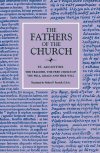
The Teacher; The Free Choice of the Will; Grace and Free Will
- Author: Augustine of Hippo
- Translator: Robert P. Russell
- Series: Fathers of the Church
- Publisher: Catholic University of America Press
- Publication Date: 1968
- Pages: 330
The Teacher, written in the form of a dialogue between Augustine and his son Adeodatus, discusses linguistic philosophies, such as the association of words and their corresponding signs and the nature of that arrangement. This exposes the natural miscommunication that occurs between two conversing humans, establishing his concluding point: we are all called to listen, as God is the source of all true and substantial knowledge.
The second work, The Free Choice of the Will, also written as a dialogue, defends man’s free will to choose right and wrong against the Manichaean view of man as a battlefield in a spiritual war between good and evil.
Finally, Grace and Free Will, written against Pelagius to defend the necessity of grace (and simultaneously deny the sufficiency of free will), demonstrates that grace and free will are not mutually exclusive concepts.
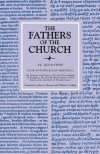
Four Anti-Pelagian Writings
- Author: Augustine of Hippo
- Translator: John A. Mourant
- Series: Fathers of the Church
- Publisher: Catholic University of America Press
- Publication Date: 1992
- Pages: 370
This volume brings together writings from early and late stages of Augustine’s involvement in the Pelagian controversy. On Nature and Grace and On the Proceedings of Pelagius both date from AD 415–416 and constitute two of Augustine’s most extensive treatments of the actual words of Pelagius. On the Predestination of the Saints and On the Gift of Perseverance were probably written in AD 428, near the end of Augustine’s life. Augustine’s opponents in his writings, he admits, are not really Pelagains at all. They were monks of Provence, led by John Cassian, who were disturbed by the more extreme consequences of the theology of grace and predestination that Augustine had worked out in his controversy with the Pelagians. Since the sixteenth century, they have been labeled “semi-Pelagians.”
Taken together, these writings provide an occasion to examine the continuity and development of Augustine’s theology of grace. They also afford much insight into the fifth-century status of many theological questions that are alive today, such as the extent of the damage done to human nature by sin, the theology of original sin, the effects of baptism, and the true meaning and scope of God’s salvific will.
These treatises include some of Augustine's most significant statements on grace. Intended for scholars and students of theology and philosophy, this edition includes three treatises translated for the first time from modern critical texts. William Collinge’s trenchant introductions offer detailed accounts of the historical and critical work done over the hundred years since the last publication.
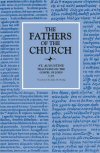
Tractates on the Gospel of John, 1–10
- Author: Augustine of Hippo
- Translator: John W. Rettig
- Series: Fathers of the Church
- Publisher: Catholic University of America Press
- Publication Date: 1988
- Pages: 249
In Christian Latinity, the tractate is a specific type of sermon, delivered as part of a liturgy, which combines scriptural exegesis, preaching, spiritual commentary, and theological reflection. This volume contains the first ten of the 124 tractates on the Gospel of John delivered by St. Augustine, the world-renowned fourth-century bishop of Hippo Regius in North Africa. As sermons they exemplify the theory of preaching he outlined in his De doctrina Christiana (On Christian Instruction)—to preach in a simple and direct style accessible to all without compromising the theological knowledge and spiritual experience of the message.
Because John’s Gospel particularly emphasized the divinity of Jesus, the identity of the historical Jesus with the Messianic Christ, the Trinitarian Word, these sermons necessarily involve much Trinitarian and Christological theology. They explain and defend the orthodox position established at the councils of Nicea (AD 325) and Constantinople (AD 381). Their major theme is that Jesus Christ is the center of the Christian life, the Son of God and the Son of Man.
Beyond contemplation of John's Gospel, the Tractates reveal much about the heresies to which Augustine's congregation was exposed: Manichaeism, with its dualistic logic; Donatism, a schismatic, puritanical, and sacramental movement which involved the intervention of the state in the affairs of the Church; and Pelagianism, with its doctrines of original sin, grace, free will, and predestination.
Augustine delivered these sermons in Ciceronian oratorical style, having as his purpose to teach, to please, and to persuade. Through his allegorical exegesis, his audience was led to an understanding of the meaning of Scripture that would so affect their souls as to help them grow spiritually and bring them to eternal salvation.
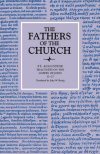
Tractates on the Gospel of John, 11–27
- Author: Augustine of Hippo
- Translator: John W. Rettig
- Series: Fathers of the Church
- Publisher: Catholic University of America Press
- Publication Date: 1988
- Pages: 320
Of the 124 tractates that St. Augustine delivered to his congregation at Hippo Regius, the first fifty-four form a distinct group. They differ in length and character from the remaining tractates, contain many chronological references, and consist of bitter attacks on the Donatists and other heresies. The remaining tractates (55–124) are brief and contain no chronological references to prior tractates. Scholars maintain that the latter were dictated for later reading to the people rather than extemporaneously delivered.
This volume contains tractates 11–27. In 11–16 Augustine continues the attack, begun in tractates 1-10, on the heresies of Manichaeism, Donatism, and Pelagianism. Beginning with the seventeenth tractate, however, he focuses greater attention on Arianism, a Trinitarian heresy whose major tenet was that divine being was uncreated, unbegotten, and unique and that Christ was not true God but a creature who had a beginning. Augustine also attacks lesser Christological heresies: the Apollinarists, who assert that Christ did not assume the complete human nature but only the body, and Photinus of Sirmium, who held that Christ did not except for his miraculous birth and acquired a plenitude of grace through moral perfection.
In these tractates Augustine combines scriptural exegesis, the refutation of false teachings, and theological reflections with the spiritual and moral instruction of his congregation. “Look for separation in the Father and Son, you do not find it; even if you have soared high, then you do not find it; if you have touched something beyond your intellect, then you do not find it. For if you busy yourself in these things which the erring mind makes for itself, you speak with your own images, not with the Word of God; your images deceive you. Transcend the body and savor the mind. Transcend the mind also and savor God.”
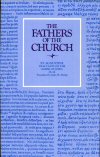
Tractates on the Gospel of John, 28–54
- Author: Augustine of Hippo
- Translator: John W. Rettig
- Series: Fathers of the Church
- Publisher: Catholic University of America Press
- Publication Date: 1993
- Pages: 336
In his preaching, St. Augustine developed an oratorical style based on the classical rhetoric he had learned prior to his conversion which he adapted to the unique demands of Christian preaching. He still recognized the classical ends of rhetoric: to teach, to please, and to persuade. He gave, however, the place of most importance to content: what was said was more important than how it was said. He eschewed the more elaborate figures of speech, using a more direct manner to educate an audience that was, to a great extent, illiterate. The result, however, is not a debased Ciceronian style but a method of preaching that is clear, lively, and well-suited to its purpose.
Just as Augustine’s oratorical style was subordinated to the demands of preaching the gospel of Christ, so also his method of commentary was similarly influenced by his duty as pastor at Hippo to instruct his flock in matters of faith and morals. His commentary, then, contains more than exegesis. His reflections on Scripture lead him to discussions of both moral action and dogma.
Augustine’s extemporaneous style and broad range of interests are evident in the tractates included in this volume, in which he comments on chapters 7–12 of St. John’s Gospel. These chapters contain some of the best-known episodes from the life of Christ: the encounter with the woman caught in adultery, the healing of the man born blind, the raising of Lazarus from the dead, Mary's anointing of Christ’s feet, and Christ’s triumphant entrance into Jerusalem. The passages also contain some of Christ’s most explicit teaching of his divinity. In unfolding the mysteries contained in these chapters of St. John, Augustine moves easily from exegesis to reflections on moral virtue and doctrine, especially the Trinity and the Incarnation. But he never loses sight of his audience. Even in his comments on the loftiest of ideas, he strives to make the teaching accessible to all.
These tractates, then give us a glimpse of the man that we do not often get from his other works. Augustine’s preaching shows us not only his brilliant mind and rhetorical skills as he expounds upon the Scriptures but also the great love he had for Christ and for the faithful entrusted to his care.
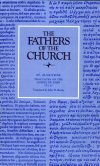
Tractates on the Gospel of John, 55–111
- Author: Augustine of Hippo
- Translator: John W. Rettig
- Series: Fathers of the Church
- Publisher: Catholic University of America Press
- Publication Date: 1994
- Pages: 338
This is the fourth of five volumes of John W. Rettig’s translation of St. Augustine’s Tractates on the Gospel of John. In the Tractates, Augustine progressively comments on the Gospel text, using a plain yet compelling rhetorical style. With the keen insight that makes him one of the glories of the Latin church, he amplifies the orthodox doctrinal and moral lessons to be read therein.
Modern scholars generally concede that Tractates 55–111 fall within a distinct group thought to have been composed between AD 414 and 420. In them Augustine deftly employs the sacred text to defend the teachings of Nicene orthodoxy. Among the more noteworthy theological features upon which the reader can focus is a defense of the much controverted Filioque in Tractate 99. There is also an examination of the paradoxes inherent in the Incarnation: the entrance into history of an immanent and transcendent God the Word; how that union of that Word with human nature; how that union in the Person of Christ does not confound or diminish either Nature. No less significant is Augustine's examination of predestination, the mystery of the elect, love of God as the fruit of contemplation, the Eucharist as the source of the martyr’s strength, the divine Nature, and a source of other topics that remain significant in the discussion of the development of dogma.
In these Tractates Augustine comments upon a discrete portion of the sacred text: the Last Supper and the priestly prayer of Jesus. The reader is left, in the end, in a state of watch with the Savior for his impending Passion, Death, and Resurrection, which will be discussed in the last volume of the Tractates.
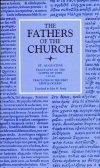
Tractates on the Gospel of John, 112–124; Tractates on the First Epistle of John
- Author: Augustine of Hippo
- Translator: John W. Rettig
- Series: Fathers of the Church
- Publisher: Catholic University of America Press
- Publication Date: 1995
- Pages: 315
In this volume, which concludes John W. Rettig’s translation of St. Augustine’s Tractates on the Gospel of John, Augustine applies his keen insight and powers of rhetoric to the sacred text, drawing the audience into an intimate contemplation of Jesus through the course of his Passion, Death, and Resurrection.
Augustine clarifies the meaning of words and phrases (often appealing to the Greek text), resolves obscurities, and reconciles apparent contradictions. He explains the Scriptures on several levels of meaning and draws from them practical implications for the Christian life. Always evident in his teaching and exhortation is his strong desire to lead souls to a knowledge and love of God.
Because the scriptural readings for holy Week and the Octave of Easter were fixed to some extent, during the Easter Octave in AD 407 Augustine had to interrupt his exposition of John’s Gospel after delivering the twelfth tractate. In order to maintain some continuity, he decided to preach upon the First Epistle of John. Its central theme, which Augustine saw to be caritas (Christian love), was especially appropriate at this time, for the Donatist schism had torn many away from the Church at Hippo. In the ten tractates on the First Epistle of John, Augustine develops an outline of his theology on love and explains its implications for the Mystical Body of Christ. He teaches that those who hate the members of Christ cannot truly love Christ—even if they profess otherwise, even if they were to lay down their lives for Him. In these tractates Augustine once again reveals himself as the humble and zealous pastor of souls. His words seem to radiate the very love about which he speaks, so that few of his listeners could accuse him of preaching what he himself did not practice.
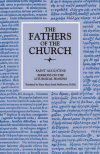
Sermons on the Liturgical Seasons
- Author: Augustine of Hippo
- Translator: Mary Sarah Muldowney
- Series: Fathers of the Church
- Publisher: Catholic University of America Press
- Publication Date: 1959
- Pages: 471
Containing 79 sermons for nine different liturgical seasons on the Christian calendar, these quintessential Augustinian works provide a new look at Augustine’s thought, exploring his gift at oratory writing and the topics of his preaching.
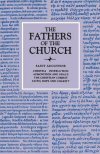
Christian Instruction; Admonition and Grace; The Christian Combat; Faith, Hope and Charity
- Author: Augustine of Hippo
- Translator: John J. Gavigan
- Series: Fathers of the Church
- Publisher: Catholic University of America Press
- Publication Date: 1950
- Pages: 494
This volume contains multiple short works of Augustine’s, exploring the theology, philosophy, and aescetics throughout his life.
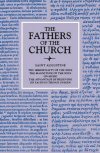
The Immortality of the Soul; The Magnitude of the Soul; On Music; The Advantage of Believing; On Faith in Things Unseen
- Author: Augustine of Hippo
- Translator: Ludwig Schopp
- Series: Fathers of the Church
- Publisher: Catholic University of America Press
- Publication Date: 1947
- Pages: 489
This volume contains multiple short works of Augustine’s, exploring the theology, philosophy, and aescetics throughout his life.
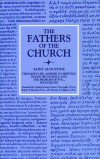
The Happy Life; Answer to Sceptics; Divine Providence and the Problem of Evil, Soliloquies
- Author: Augustine of Hippo
- Translator: Ludwig Schopp
- Series: Fathers of the Church
- Publisher: Catholic University of America Press
- Publication Date: 1948
- Pages: 450
This volume contains multiple short works of Augustine’s, exploring the theology, philosophy, and aescetics throughout his life.
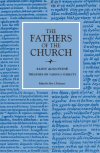
Treatises on Various Subjects
- Author: Augustine of Hippo
- Translator: Mary Sarah Muldowney
- Series: Fathers of the Church
- Publisher: Catholic University of America Press
- Publication Date: 1952
- Pages: 487
The present volume consists of a collection of minor writings of St. Augustine often classified under the general title of ‘Works of Moral and Practical Theology.’ While St. Augustine is well known for his great masterpieces such as the Confessions and City of God, too little is known about him as a writer of short treatises intended for the general spiritual welfare of the people. These little essays still have an unending appeal for people of all times who are concerned about the salvation of their immortal souls.
The treatises included are: The Christian Life (De vita christiana), Lying (De medacio), Against Lying (Contra mendacium), Continence (De continentia), Patience (De patientia), The Excellence of Widowhood (De bono viduitatis), The Work of Monks (De opere monachorum), The Usefulness of Fasting (De utilitate ieiunii), and the Eight Questions of Dulcitius (De octo Dulcitii quaestionibus). Other works of moral and practical theology are not included, notably the De catechizandis rudibus, and the De doctrina christiana, but arrangements have been made to present these in other volumes. Indeed, these two cannot very well be called ‘minor’ works.
The essay, The Christian Life, is Pelagian in tone and is definitely not St. Augustine's, but it is included here because it comes from the same general period as the other essays and treats of a similar subject. Moreover, it has special interest in that it probably was written by a close follower of Pelagius, one of St. Augustine’s celebrated opponents.
Each treatise in this volume has its own introduction, giving pertinent information for an intelligent understanding of the essay and other matters of general interest.
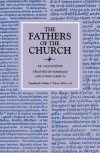
Treatises on Marriage and Other Subjects
- Author: Augustine of Hippo
- Translators: Charles T. Wilcox, Marie Ligouri, John McQuade, Ruth Wentworth Brown, John A. Lacy, Robert P. Russell, and Charles T. Huegelmeyer
- Series: Fathers of the Church
- Publisher: Catholic University of America Press
- Publication Date: 1955
- Pages: 456
A collection of nine short works by Augustine and translated by numerous editors for the Fathers of the Church Series. Among these works includes:
- The Good of Marriage
- Adulterous Marriages
- Holy Virginity
- Faith and Works
- The Creed
- Faith and the Creed
- The Care to be Taken for the Dead
- In Answer to the Jews
- The Divination of Demons
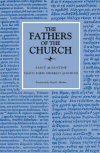
Eighty-Three Different Questions
- Author: Augustine of Hippo
- Translator: David L. Mosher
- Series: Fathers of the Church
- Publisher: Catholic University of America Press
- Publication Date: 1982
- Pages: 279
In the autumn of AD 388, St. Augustine returned from Italy to northern Africa. Here in his native Thagaste he assembled a monastic community. When the brethren found their leader Augustine in a rare moment of leisure, they had no misgivings about putting questions to him on a variety of topics which he answered from the store of his vast knowledge. These questions together with the answers were later collected and assembled in a random order (ractions). The English translation presented here affords the reader a rare opportunity to glimpse some of the topics that interested members of a community that eventually gave the early Church four bishops: Alypius of Thagaste, Severus of Milevis, Profuturus of Citra, and Possidius of Calama.
Even though St. Augustine intended no specific sequence in this collection, four broad categories in the question and answer literary form are discernible. One category serves as Christian apologetic, e.g., against Arian and Manichaean errors. The second presents Augustine in the role of exegete of selected passages from both the Old and New Testaments. The third and fourth categories, containing the greater number of questions and answers, show Augustine the philosopher and theologian, a person of towering intellectual stature in western Christianity and one of the important “Founders of the Middle Ages.” Though formulated between the years AD 388 and 395/97 and presented from the viewpoint of Neoplatonists, many topics, e.g., the cause of evil, sin and freewill, still have great relevance for the modern reader.
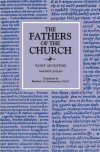
Against Julian
- Author: Augustine of Hippo
- Translator: Matthew A. Schumacher
- Series: Fathers of the Church
- Publisher: Catholic University of America Press
- Publication Date: 1957
- Pages: 427
The Julian mentioned in the title is Julian of Eclanum who was born at Eclanum in Italy in 380 and died in Sicily ca. 455. After the death of his wife, Julian joined the clergy of his native diocese and eventually succeeded his father as bishop. With a mastery of Greek and Latin Julian combined a great store of theological learning which, however, was tainted with Pelagian errors. Because of his support of Pelagius Julian himself was condemned, deposed and expelled from Italy. In his authentic work, four books to Turbantius, three letters, and eight books to Florus, Julian’s heterodox teachings reduced grace to a simple, protective, divine assistance and practically denied that the taint of Adam’s sin passed on to the human race.
In Against Julian Augustine stresses in the first two books the traditional teachings of the Church found in the Fathers and contrasts their teaching with the rationalism of the Pelagians. Thereupon he refutes the error of the Pelagians that grace is given according to merits. To refute the Pelagian error concerning concupiscence Augustine explains the Pauline teaching “that each one may know how to possess his vessel.” In the concluding book we find a detailed explanation of the practice of infant baptism. This section is a valuable witness to the ritual of baptism as it was conferred in the age of the Fathers.
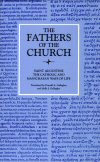
The Catholic and Manichaean Ways of Life
- Author: Augustine of Hippo
- Translator: Donald A. Gallagher
- Series: Fathers of the Church
- Publisher: Catholic University of America Press
- Publication Date: 1966
- Pages: 148
The Catholic and Manichaean Ways of Life conveys Augustine’s early thoughts on the morals and customs practiced by the different sides—that is, Catholic and Manichaean. This younger Augustine intends to disprove the boastings of the Manichaeans that their way of life is more pious and devout than the Catholics—and, further, that the Catholic faith is proven true by its truer systems of devotion.
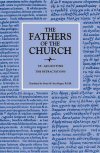
The Retractations
- Author: Augustine of Hippo
- Translator: Mary Inez Bogan
- Series: Fathers of the Church
- Publisher: Catholic University of America Press
- Publication Date: 1968
- Pages: 339
The major portion of St. Augustine’s literary output listed, accounted for, and criticized by the author himself—such is the work here published in English translation for the first time. As the aged Augustine reread his extensive production, he sought to identify and to report to his widely scattered readership anything in his writings that had offended him or might offend others. In achieving this purpose, Augustine brought out a book scarcely to be matched in world literature.
Happily, it was toward the end of his life that the busy Bishop of Hippo set to this review; thus, but few of his “books” fail here to receive his searching self-criticism. His letters and sermons are in general not dealt with; they were to be covered in further parts of the Retractations that Augustine did not live to achieve.
The extensive notes that the translator furnishes supply the background to Augustine’s own discussion of each one of his 93 books, and both analyze and synthesize the bishop’s large and wide-ranging production.
Reviews
4 ratings

Daniel Caballero
11/29/2019

William A. Long
5/8/2018

Larry Liddiard
11/28/2015

Dave Crosby
1/26/2015